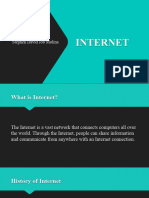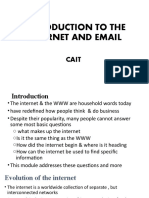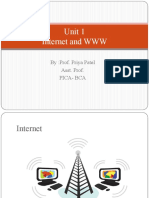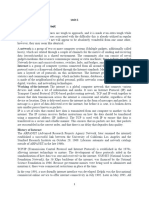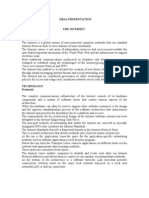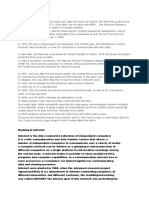0% found this document useful (0 votes)
4 views2 pagesWeek 3
The Internet Environment refers to the virtual space where billions of devices connect and communicate, featuring global connectivity, 24/7 accessibility, and multimedia support. It serves various purposes including communication, information access, entertainment, commerce, education, and collaboration. Additionally, network groups consist of interconnected devices that share resources, with types including Local Area Networks (LAN), Wide Area Networks (WAN), and wireless networks.
Uploaded by
christophershedrach61Copyright
© © All Rights Reserved
We take content rights seriously. If you suspect this is your content, claim it here.
Available Formats
Download as PDF, TXT or read online on Scribd
0% found this document useful (0 votes)
4 views2 pagesWeek 3
The Internet Environment refers to the virtual space where billions of devices connect and communicate, featuring global connectivity, 24/7 accessibility, and multimedia support. It serves various purposes including communication, information access, entertainment, commerce, education, and collaboration. Additionally, network groups consist of interconnected devices that share resources, with types including Local Area Networks (LAN), Wide Area Networks (WAN), and wireless networks.
Uploaded by
christophershedrach61Copyright
© © All Rights Reserved
We take content rights seriously. If you suspect this is your content, claim it here.
Available Formats
Download as PDF, TXT or read online on Scribd
/ 2














